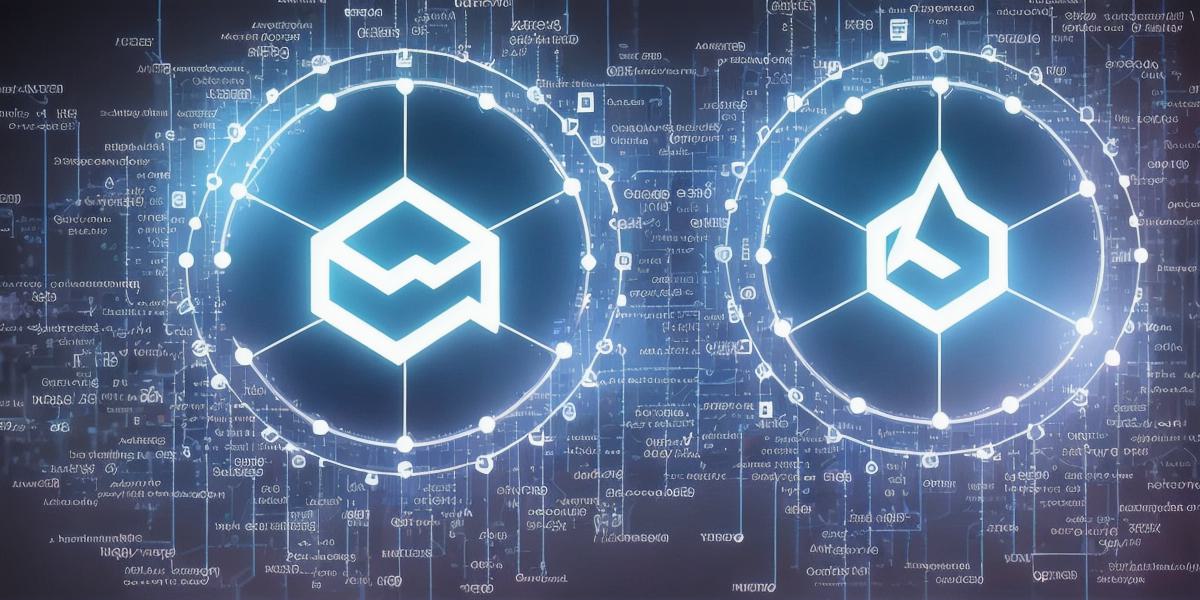Web 3.0, also known as the decentralized web, is a new era for the internet that promises to revolutionize how we interact with each other and our data. With its focus on decentralization, security, and interoperability, Web 3.0 has the potential to reshape the way we build applications and services online. In this article, we will explore the top features of Web 3.0 and their potential impact on the future of the internet.
1. Decentralization
Decentralization is the core principle of Web 3.0. Instead of relying on centralized servers to store and manage data, Web 3.0 uses a network of distributed nodes that work together to maintain a decentralized database. This provides several advantages, including increased security, resilience, and privacy. For example, if one node in the network is compromised, the others can continue to function without interruption. Additionally, decentralization allows users to retain control over their data, rather than relying on a third-party to store and manage it for them.
2. Smart Contracts

Smart contracts are self-executing programs that run on the blockchain, allowing for the automation of complex processes. They can be used to create decentralized applications (dApps) that handle tasks such as identity verification, supply chain management, and more. Smart contracts provide several advantages over traditional contracts, including increased transparency, reduced costs, and improved security. For example, a smart contract could automatically execute a payment when certain conditions are met, eliminating the need for intermediaries and reducing the risk of fraud.
3. Interoperability

Interoperability refers to the ability of different dApps and systems to communicate and work together seamlessly. This is important because it allows for the creation of a unified ecosystem that can leverage the strengths of each individual dApp. For example, a dApp that uses a smart contract to handle identity verification could be integrated with a dApp that uses a decentralized database to store and manage user data, providing a more secure and efficient way of verifying identities.
4. Privacy
Privacy is a major concern for many internet users, and Web 3.0 provides several solutions to address this issue. For example, decentralized storage allows users to retain control over their data, rather than relying on a third-party to store and manage it for them. Additionally, smart contracts can be used to implement privacy-enhancing technologies such as zero-knowledge proofs, which allow users to prove the validity of a statement without revealing any underlying information.
5. Security
Web 3.0 provides several security benefits over traditional web architectures. For example, decentralization eliminates the risk of a single point of failure, making it more difficult for attackers to compromise the system. Additionally, smart contracts provide increased transparency and accountability, making it easier to detect and prevent fraudulent activity. Finally, privacy-enhancing technologies such as zero-knowledge proofs can be used to further strengthen security by ensuring that sensitive data is not exposed to unauthorized parties.
FAQs
Q: What is Web 3.0?
A: Web 3.0 refers to the decentralized web, which promises to revolutionize how we interact with each other and our data through its focus on decentralization, security, and interoperability.
Q: How does Web 3.0 differ from traditional web architectures?
A: Web 3.0 relies on a network of distributed nodes to store and manage data, rather than relying on centralized servers. This provides several advantages, including increased security, resilience, and privacy.
Q: What are smart contracts?
A: Smart contracts are self-executing programs that run on the blockchain, allowing for the automation of complex processes. They can be used to create decentralized applications (dApps) that handle tasks such as identity verification, supply chain management, and more.
Q: What is interoperability?
A: Interoperability refers to the ability of different dApps and systems to communicate and work together seamlessly. This is important because it allows for the creation of a unified ecosystem that can leverage the strengths of each individual dApp.
Conclusion
Web 3.0 has the potential to reshape the way we build applications
